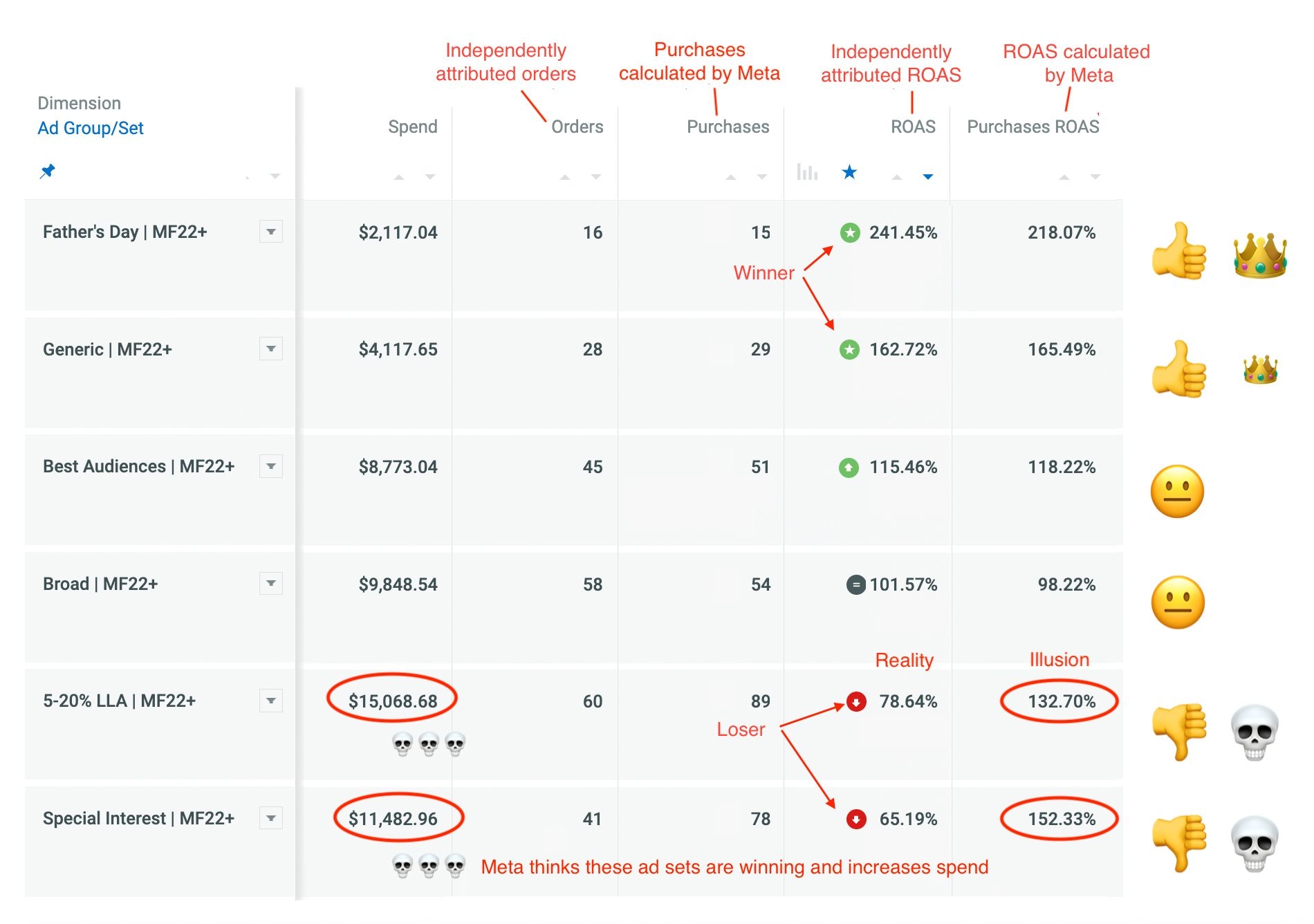Apple’s iOS 14+ update has been largely debated, and for very good reasons. The new privacy-enhancing feature affected most advertisers but, as intended, brought users in control of their privacy, security, and ad tracking preferences. Still, most advertisers have been navigating hard times mitigating iOS 14+ update impact on ad performance on Facebook and other channels, understanding traffic, and getting omnichannel attribution right.
The iOS 14 update and its impact on advertisers
At the start of 2021, Apple announced a new major update that went live with version 14.5 of its operating system.
This privacy feature is at the heart of data privacy regulations such as the EU's GDPR. With the new iOS 14 change, users have been given the possibility to opt into data collection rather than opt out. Specifically, the App Tracking Transparency (ATT) framework will have to be implemented if any app collects data about end-users and shares it with other companies to track across apps and websites. In this framework, users must be presented with an app-tracking authorization request and informed about the tracking authorization status. As expected, few users accept the prompt to opt-in.
This made it very difficult for businesses to reach their target audience and deliver relevant ads, while advertising platforms have a hard time justifying ad performance.
Understanding Identification for Advertisers - IDFA
Apple's identifier for advertisers (also known as IDFA) is a unique alphanumeric string corresponding to each Apple device and is used by advertisers to identify users. The code was available to businesses running ads and enabled them to retarget visitors and measure performance. In the new context of iOS 14+, the IDFA is only available when consumers give their permission to be tracked.
Research showed that prior to the iOS14 change, approximately 70% of iOS users were sharing their IDFA. Estimates indicate only 5% for US consumers, while globally, approximately 13% of iOS users share their IDFA.
Meta's solution to ATT - conversion modeling
In an attempted response to the lack of visibility brought by Apple's ATT requirements as well as the ePrivacy Directive in the EU region, Meta introduced the conversion modeling solutions. As described in a blog post, these "use aggregated data from different sources to enable comprehensive measurement and performance optimization where conversion data may be partial or missing." The feature refers to measurement and reporting on one side and optimization and performance on the other.
This move comes as a direct response to an increasingly pressing issue - the decreasing precision of targeting, retargeting, and the lack of ad tracking capabilities in the mobile app environment created by Apple's privacy endeavors. The applied statistical modeling for reporting conversion events, such as purchases and values, and add-to-cart events can be easily regarded as a black box, mainly because of the lack of data behind such models.
Meta provided explanations like "our modeling uses data from several different sources to measure activity that's hard to count directly" without specifically naming the sources. Thus, advertisers must ensure they implement additional tracking systems and don't rely on Meta's reporting.
Minimize iOS 14+ update impact on ad performance on Facebook,TikTok & Co.
It has become clear that measuring performance independently is crucial. Admetrics provides this capability to DTC brands on Shopify. Too often, discoveries among ad accounts of Admetrics' clients reveal that conversion counts are often inflated, and, more importantly, the conversions are regularly attributed to the "wrong" campaigns, ad sets and ads.
To exemplify, the screenshot below compares the ad set performance of a client's prospecting campaign. For some ad sets, Meta's data lacks substance. Thus, the algorithm made wrong decisions and kept spending on poor-performing ad sets while others performed better.
Three actions any marketer should do to optimize ad performance
1. Measure independently and regularly check against Meta's results. Turn off what doesn't work and transmit to Meta & Co. what to scale based on your verified results.
2. To improve Meta's capability to attribute, enable server-to-server data sharing through Meta's conversion API integration. We recently implemented a convenient one-click integration of this into the Admetrics Data Studio.
3. Try advanced retargeting and lookalike audiences to really ramp up your prospecting: Admetrics is rolling out an AI-based feature to automate this - big news ahead!
Optimize ad performance with Admetrics Data Studio
If you want to regain control and truly understand the performance of your paid and non-paid activities in the post iOS 14 advertising landscape, ensure independent measurement, and improve digital marketing reporting capabilities, Admetrics is your go-to tool.
It will provide actionable insights like best-performing campaigns, creatives, and copy across all channels, and offers insights on more than 40 metrics like ROAS, repurchase rates, or CPO and over 20 dimensions such as campaigns, traffic sources, and referrers. A unified, customizable dashboard displays data on customer journeys and marketing attribution.
Minimize the impact of iOS 14+ update on ad performance on Facebook,TikTok & Co with Admetrics
Admetrics Data Studio is now available in the Shopify App Store. New users get assisted onboarding with our customer service specialists as well as a free data audit. Find out how to optimize ad performance in the post iOS 14+ era.


